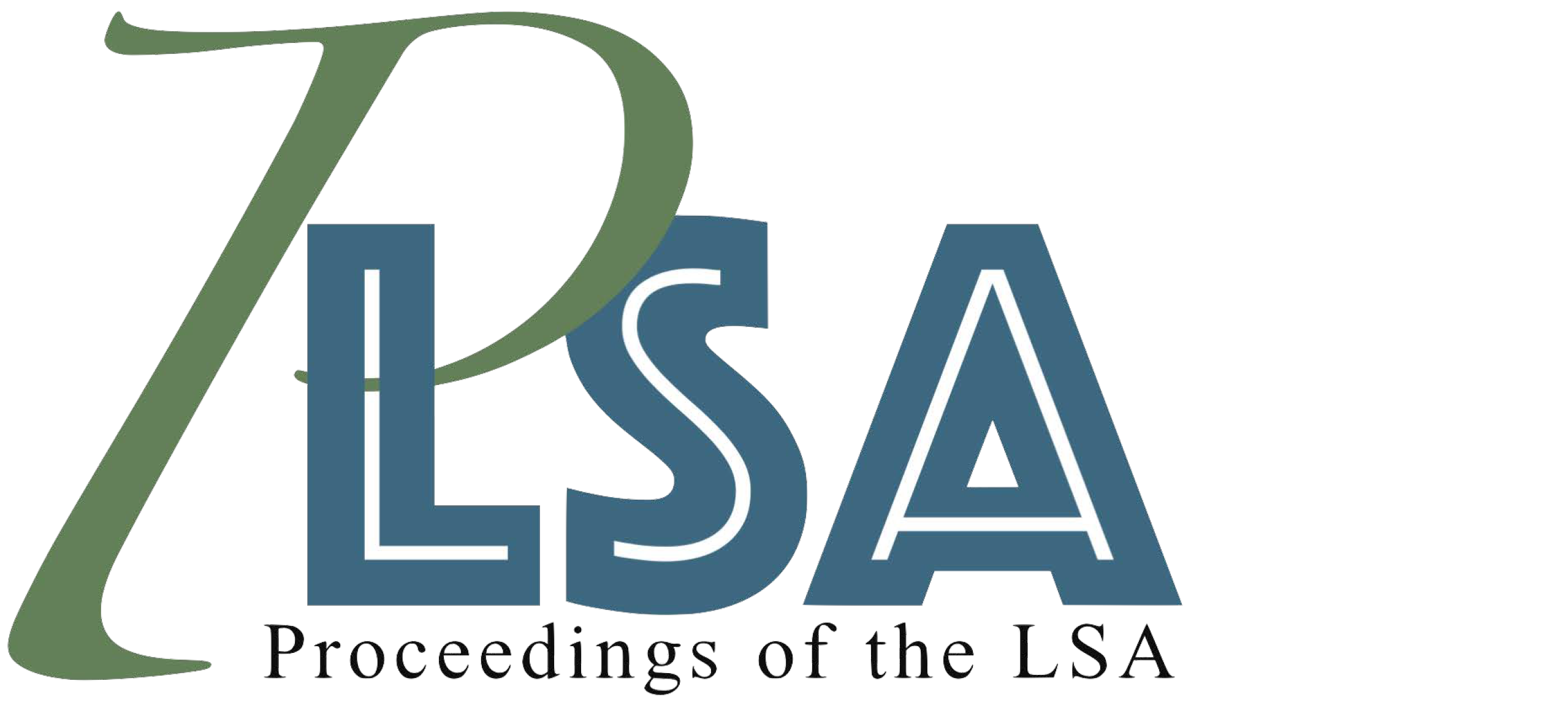Testing a place-of-articulation double phoneme boundary in English-Tamil bilinguals
DOI:
https://doi.org/10.3765/plsa.v10i1.5906Keywords:
place-of-articulation, bilingualism, double phoneme boundary, categorical perception, categorical boundary, TamilAbstract
Categorical perception work in bilinguals has been found to support a Dual Language System Hypothesis, which states that bilinguals use one of two language-specific phonemic boundaries dependent on language context. This phenomenon of the double phoneme boundary has only been tested on the Voice Onset Time continuum. The current study tests bilingual speakers for a double phoneme boundary along the place-of-articulation (POA) continuum. English contrasts between dental and alveolar POAs whereas Indian Tamil contrasts between dental and retroflex POAs. In this study, American English-Indian Tamil bilinguals performed an Identification Task and a Discrimination Task in an English language session and a Tamil language session to demonstrate if they would place a dental category boundary at different points along a stimulus continuum between sessions. Participants did not demonstrate a shift in boundary location and a double phoneme boundary. Participants instead demonstrated two boundaries and thus a three-way categorization in both language contexts for POA, supporting a Unitary Language System. Further studies testing English and Tamil monolinguals would clarify if there is truly a unique bilingual categorization mechanism, or if bilinguals and monolinguals can both be explained via the Perceptual Assimilation Model.
Downloads
Published
Issue
Section
License
Copyright (c) 2025 Anushri Kartik-Narayan, Dr. Rebecca Scarborough

This work is licensed under a Creative Commons Attribution 4.0 International License.
Published by the LSA with permission of the author(s) under a CC BY 4.0 license.
